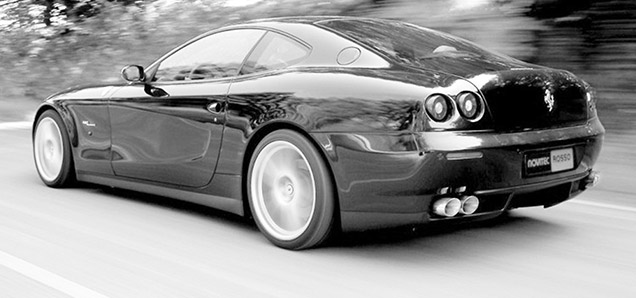ARTiculation: Lessons from the undercarriage
 CREDIT: TOPCARPICTURE.COM
CREDIT: TOPCARPICTURE.COMAmy Van Es� dad taught her that a car is a work of art.
The daughter of a mechanic, I have spent many a day sitting on a stool beside the car while Dad speaks to me from under it. He would teach me about engines, chassis and alternators. Sitting on the porch, he'd crane his neck to get a better view of the Stingray passing the house and tell me all about it once it was out of sight. I have spent weekends at race tracks and car shows. Sitting in his basement last weekend with a mouthful of pizza, my dad began explaining to me how cars are a work of art. He described the creation process — from idea, to sketch, to model, to prototype, to product. From the curvature of the chrome to the angle of the spoiler, he went on and on, teaching me about the subtleties of crafting a vehicle. His hands moved fluidly around one another in the air as if he were moulding a Bentley out of clay. He had taught me so much about his world, but I never foresaw that he'd show me a part of his that would open up a whole new realm of mine: Art is absolutely fucking everywhere.
North Americans spend (on average) nearly an hour in their vehicles getting to and from work or school each day, likely without giving a thought to what it is they're travelling in. Little do most know, they're sitting in a piece of art that has contributed to both the rich history of design and helped shape how our world looks today.
Cars have become akin to a trend forecaster, as they're a fairly accurate reflection of what people think to be the American Dream. In the '50s, it was about decoration and bright colours, reflecting the uprising of suburbia and a life that is abundant and full of choice. Now, it's about the cool clean lines and sophisticated simplicity of the seemingly seamless digital age. Just as cavemen used sticks to make ideographs on their walls and we now don't need any drawing tools other than our computer's mouse, cars have quite literally become a vehicle for design innovation.
Cars and traditionally defined art (visual, movement, musical) alike have made themselves fixtures in the way our society functions. Without cars, the physical structure of London would grossly differ from what it looks like today. Cars grant us the liberty of time-efficient travelling. We can get from one place to another in barely any time at all, and the roads and highways reflect that it's become a necessity. Similarly, without art, the emotional landscape of our city would be different. Art provides a no-holds-barred outlet to express our emotions, and public forums make it obvious how the majority feel. These two ideas fit together seamlessly when someone is to purchase a new car. Carefully, they scan their options: colour, sport packages, chrome detailing, sound systems, to reflect their personality in the car. Their car becomes an extension of themselves. This is functional, living art.
Still reeling from the realization that something I drive every day is a work of art, and looking around my world to find endless evidence of creative innovation, I sat at a stop light and took it all in. Take it all in. The world around you isn't a fluke. The chair you're sitting on, the mug you're drinking from, the light above you... it's all there because somebody thought it into existence. That is art. The world is a masterpiece.
Editorial opinions or comments expressed in this online edition of Interrobang newspaper reflect the views of the writer and are not those of the Interrobang or the Fanshawe Student Union. The Interrobang is published weekly by the Fanshawe Student Union at 1001 Fanshawe College Blvd., P.O. Box 7005, London, Ontario, N5Y 5R6 and distributed through the Fanshawe College community. Letters to the editor are welcome. All letters are subject to editing and should be emailed. All letters must be accompanied by contact information. Letters can also be submitted online by clicking here.













